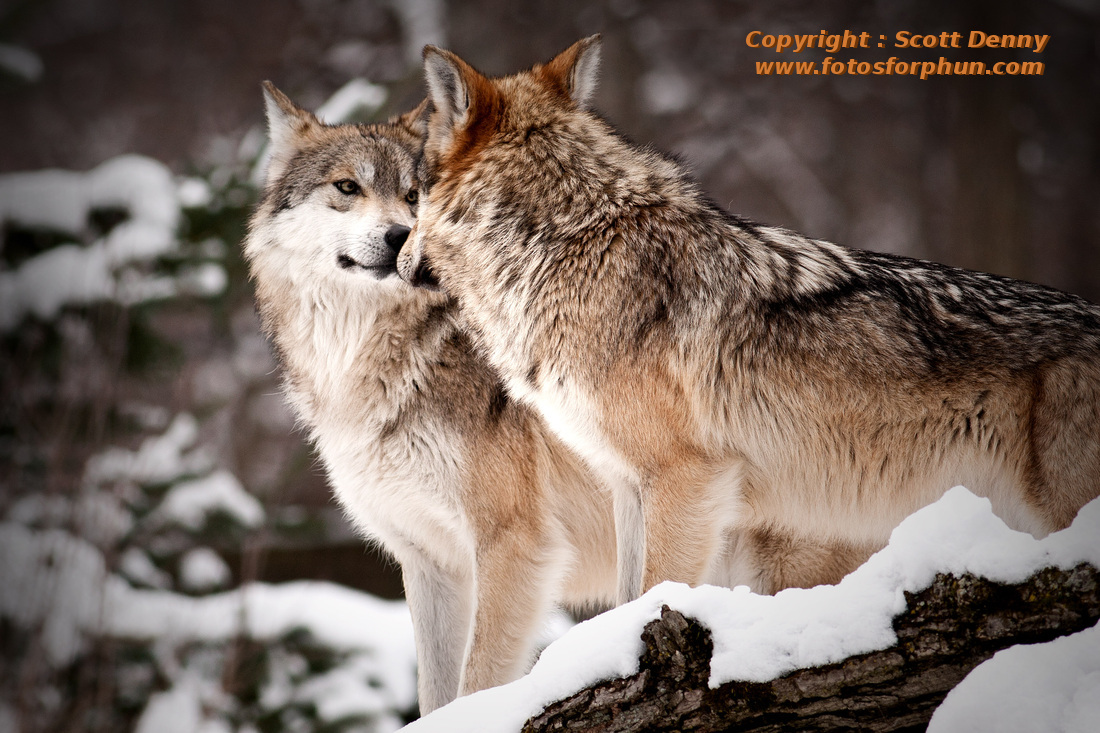Defenders of Wildlife Mexican gray wolf blog:A Drop in the Genetic Bucket
By Eva Sargent, Southwest Program Director
 Mexican gray wolves, according to science and common sense, are the most endangered wolf in the world. We should have a new count in a couple of weeks, but last year there were fewer than 60 wild Mexican wolves in the entire world.
Mexican gray wolves, according to science and common sense, are the most endangered wolf in the world. We should have a new count in a couple of weeks, but last year there were fewer than 60 wild Mexican wolves in the entire world.
They are all offspring of the emergency captive breeding effort that saved the species from extinction — an Endangered Species Act miracle, really. But what’s happened since then, since the first captive-bred Mexican gray wolves put their paws on the wild ground in 1998, is more frustrating.
Because the entire population is derived from only seven wolves (a brush with extinction that no critters should come close to), they didn’t have a great deal of genetic diversity. That is, they didn’t have a large number of different traits carried in their genes. A high amount of genetic diversity is the engine of adaptability — it allows populations to change their biology when conditions change, and that’s key to survival. The captive population has been carefully managed to preserve genetic diversity, but this only goes so far. From the beginning, geneticists knew that in order to overcome their limited genetic heritage, the Mexican gray wolves would need to rapidly expand their numbers beyond what was possible in captivity. They needed to get out of the zoos that had taken such care to save them and really take off in the wild. By reproducing quickly in the wild, they would express every ounce of genetic diversity they had in their genes. The wolves did their part immediately — pairing up, denning up, eating elk and having puppies.
Unfortunately, humans haven’t held up their part of the deal, and the population has never expanded fast enough to preserve their genetic diversity. Overzealous management and a lack of political will have kept the numbers low. Now, nearly 15 years after the first wolves were released, the Mexican gray wolf is facing a genetic emergency that could keep them from ever recovering. Already, it seems that a lack of genetic diversity is causing lower litter sizes. If the U.S. Fish and Wildlife Service doesn’t act soon to release more wolves, this and other effects of a small gene pool could doom the species, no matter how hard we try in the future to recover them.
 Many opportunities to improve the genetics of Mexican gray wolves have been squandered. Instead of supporting stable, reproducing packs, wolves are captured and moved around because they get into trouble, or cross the invisible boundaries of their small recovery area in eastern Arizona and western New Mexico. Until recently, many were sent back to captivity, and some were killed, for eating livestock. These removals were indiscriminate — it didn’t matter if the suspected cattle-eater was a mom with pups, or a genetically valuable dad. With the future of the species relying on so few individuals in the wild, we — joined by several other conservation groups — went to court over this issue, and as part of the settlement, this disastrous removal policy was ended. But its effects linger — there are still too few wolves, and too few with the best genes to keep the species on the road to recovery.
Many opportunities to improve the genetics of Mexican gray wolves have been squandered. Instead of supporting stable, reproducing packs, wolves are captured and moved around because they get into trouble, or cross the invisible boundaries of their small recovery area in eastern Arizona and western New Mexico. Until recently, many were sent back to captivity, and some were killed, for eating livestock. These removals were indiscriminate — it didn’t matter if the suspected cattle-eater was a mom with pups, or a genetically valuable dad. With the future of the species relying on so few individuals in the wild, we — joined by several other conservation groups — went to court over this issue, and as part of the settlement, this disastrous removal policy was ended. But its effects linger — there are still too few wolves, and too few with the best genes to keep the species on the road to recovery.
There are other pressures too; despite their protected status, illegal killing is the largest source of dead wolves. But the window is closing on fixing the genetic issue, and one solution is amazingly simple: Release more wolves from captivity, and do it now.
The last time a wolf from captivity was released was in 2008. Since then, there have been roadblocks and reasons and excuses, but no one has demonstrated the gumption necessary to get the job done. The U.S. Fish and Wildlife Service, which is responsible for recovering Mexican gray wolves, has waited with an absurd amount of patience for agreement from the states before acting, and all at the wolves’ expense. Opportunities have been lost, and they won’t be regained. Finally, last week, they decided to release a single male wolf in hopes that he will pair with a female of the Bluestem pack, whose mate was illegally shot and killed last year.
Of course all of us who work on Mexican gray wolf recovery are grateful for this small step in the right direction, and we hope this new male gets right down to business saving the species. But much more needs to be done, and soon, or it will be too late. The geneticists who have spent years sounding the alarm haven’t stopped, and Defenders won’t stop, until the U.S. Fish and Wildlife Service implements an emergency genetic rescue plan for the Mexican gray wolf. Such a plan would entail selective breeding in captivity, perhaps even using in vitro fertilization, to recreate the genetic makeup of the founding wolves. Still, one of the easiest steps this plan would include is to release more wolves into the wild. We’ll keep you posted on our progress with the U.S. Fish and Wildlife Service. Meanwhile, stay tuned and keep your fingers crossed for an increase in the 2012 count, due in a few weeks. More wolves from the same old breeding pairs won’t solve the genetic issue, but it will improve the outlook for the most endangered wolf on the planet.
******************************************************************************
This excellent blog post by Eva Sargent, Defenders of Wildlife Southwest Program Director, was posted on Defenders of Wildlife’s Blog on January 16, 2013.
Please take action today to pull these special wolves back from the brink of extinction. Click here to contact the US Fish and Wildlife Service and Secretary of Interior to urge many more releases of Mexican gray wolves into the wild.
To join our email list for Mexican gray wolf news and action alerts, click here.
All photos in this post are of captive Mexican gray wolves, courtesy of photographer Scott Denny.



